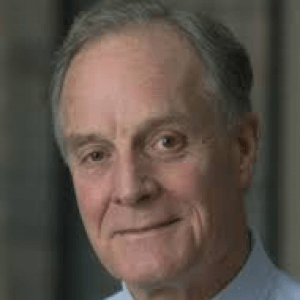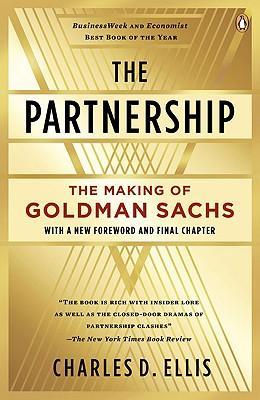The Partnership Summary
4 min read ⌚
 The Making of Goldman Sachs
The Making of Goldman Sachs
Goldman Sachs is the most powerful investment bank in the world. It generates revenue of almost $40 billion on a yearly basis, and, in 2016, its total assets worth almost $1 trillion.
In “The Partnership,” Charles D. Ellis tells its story from the very beginning.
About Charles D. Ellis
Charles D. Ellis is an American author and investment consultant, famous for his philosophy of “passive investing through index funds” explained in one of his best-known books “Winning the Loser’s Game.” He has written fifteen more, in addition to numerous articles on investing.
is an American author and investment consultant, famous for his philosophy of “passive investing through index funds” explained in one of his best-known books “Winning the Loser’s Game.” He has written fifteen more, in addition to numerous articles on investing.
“The Partnership Summary”
As we have previously reminded you, Lao-Tze once said that a journey of a thousand miles begins with a single step. Well, Goldman Sachs, the multinational investment banking behemoth, is a great proof of this.
It was founded in 1869. And, as Charles D. Ellis writes in “The Partnership”, back then, the financial colossus was an “inconspicuous business of a single immigrant with no staff and almost no capital.”
That immigrant was Marcus Goldman, a German businessman who had moved to the United States as a 27-years-old man some twenty years before, during the first Jewish immigration wave to America.
And for 23 years, Goldman Sachs was only Goldman and was mostly a dwarf in a world of financial giants, such as “J. & W. Seligman & Co.” However, Marcus Goldman worked hard and by 1882 his firm had annual profits of about $50,000.
It was then when his son-in-law, Samuel Sachs, became Goldman’s junior partner. By the end of the 19th century, Goldman Sachs & Co.’s capital would rise in the realm of the millions. Goldman Sachs was “the nation’s largest dealer in commercial paper.”
After the retirement of Marcus Goldman, his son, Henry, would become Samuel Sachs’ partner. However, the First World War would put an end to this partnership. You see, Henry Goldman had a pro-German stance during the Great War. So, he had to resign after it ended.
Goldman Sachs was now firmly into the hands of the Sachs family. To this day, not many of the members of these two families are on speaking terms.
On December 4, 1928, Goldman Sachs launched the Goldman Sachs Trading Corporation. The closed-end fund collapsed just a year later during the stock market crash, losing the company millions of dollars.
And that’s when Mr. Wall Street came to the rescue. To make matters a bit more interesting, just a decade or so before he restored Goldman Sachs, he was its employee.
To be more precise, he was Goldman Sachs’ janitor’s assistant. And he earned merely $3/week.
We’re, of course, talking about Sidney Weinberg, the man who singlehandedly saved Goldman Sachs from bankruptcy and made it the colossus that it is today. A charming man with friends at high places, he remained Goldman Sachs’ CEO until his death in 1969.
And he chose his successor well, Gus Levy. Another brilliant man with a “7 a.m. to midnight” work ethic, who instilled Goldman Sachs’ famous philosophy: “long-term greediness.”
He was succeeded by Sidney’ son, John L. Weinberg and John Whitehead, the people responsible for Goldman Sachs’ 14 business principles.
Even today, they still govern the company.
Key Lessons from “The Partnership”
1. Goldman Sachs Started with Nothing but a Goldman
2. The Goldmans and the Sachs Are Not Really on Speaking Terms
3. 1 Principle to Rule Them All
Goldman Sachs Started with Nothing but a Goldman
Goldman Sachs was founded in 1869 by Marcus Goldman, a Bavarian Jewish immigrant. At that moment, he was basically the whole company. Samuel Sachs, his son-in-law, would join almost quarter of a century later. But by the beginning of the 20th century, Goldman Sachs would already become an investment giant.
The Goldmans and the Sachs Are Not Really on Speaking Terms
After Marcus Goldman retired from his position as a CEO – and he died in 1904 – he chose his son, Henry Goldman, to succeed him. During the First World War, Henry strongly supported the Germans. That would not do for Samuel Sachs. So, Henry was ousted from his position, and the Sachs assumed control.
To this day, not many Goldmans are on speaking terms with the Sachs. But, the company’s name still stands: Goldman Sachs & Co.
1 Principle to Rule Them All
One-time janitor’s assistant Sidney Weinberg saved Goldman Sachs from bankruptcy during the Great Depression. He was Goldman Sachs’ CEO for four decades, before being succeeded by Gus Levy who built on his work. He, in turn, was succeeded by Sidney’s son John Weinberg and John Whitehead.
These two Johns restored the concept of partnership in Goldman Sachs and penned 14 principles which still govern the company. However, there’s one principle that’s above all of them: making money.
Unsurprisingly, Goldman Sachs was always about making money.
Like this summary? We’d Like to invite you to download our free 12 min app, for more amazing summaries and audiobooks.
“The Partnership” Quotes
International business at Goldman Sachs can be traced back to 1897, when a profit of $4,000 was recorded. Share on X Redefining a business and reinventing the firm – often very substantially changing itself and its way of doing business – are themes in the extraordinary growth and expansion of Goldman Sachs. Share on X Goldman Sachs was fighting for its life all through the Depression and World War II. Share on X By the 1960s, Goldman Sachs was already well along in developing one of its decisive competitive strengths – selling securities more effectively than the rest. Share on X Making money – always and no exceptions – was a principle of Goldman Sachs. Share on X
Emir is the Head of Marketing at 12min. In his spare time, he loves to meditate and play soccer.


 The Making of Goldman Sachs
The Making of Goldman Sachs



